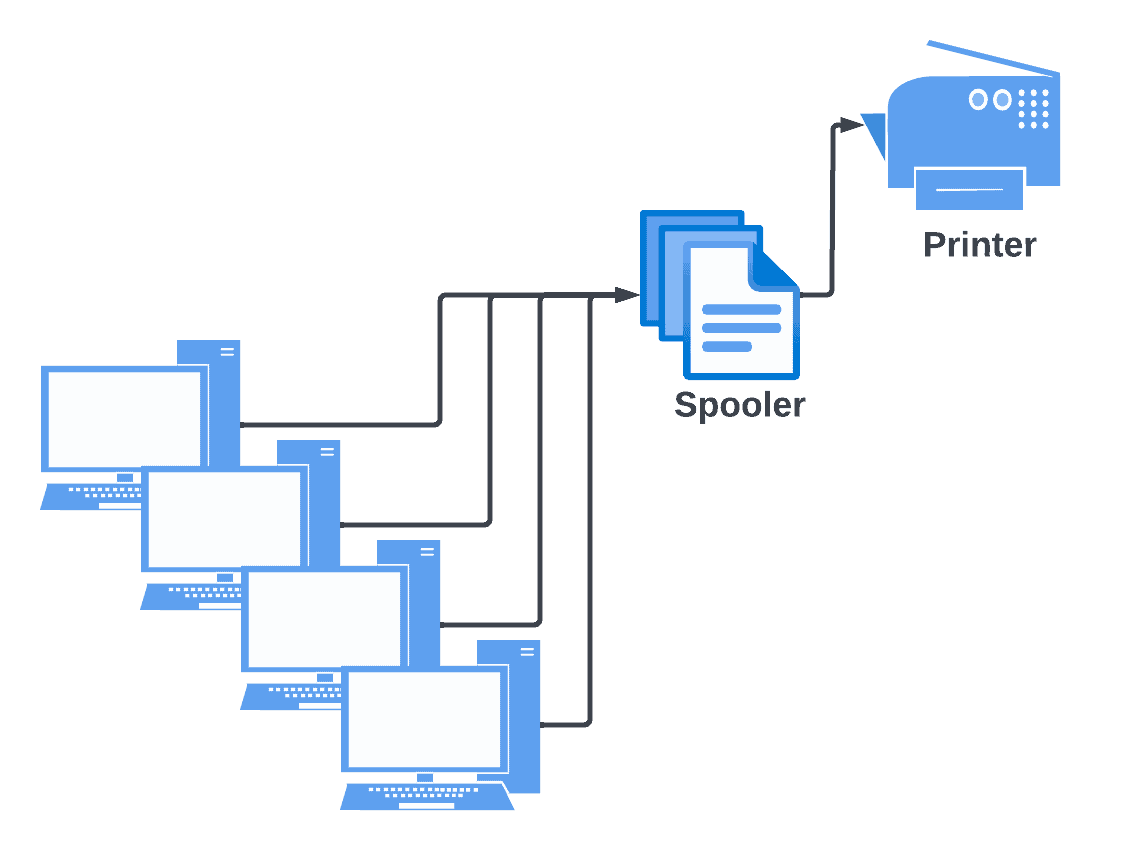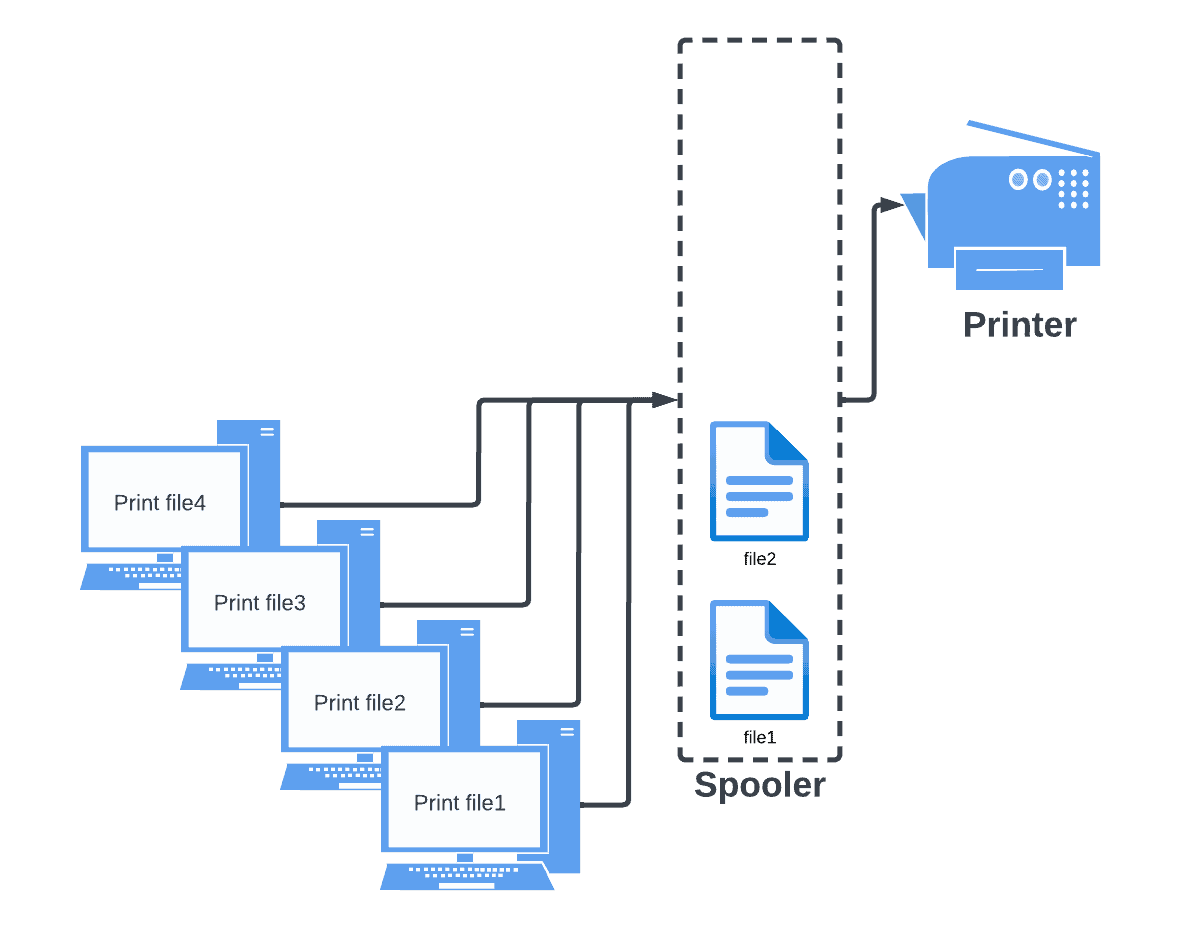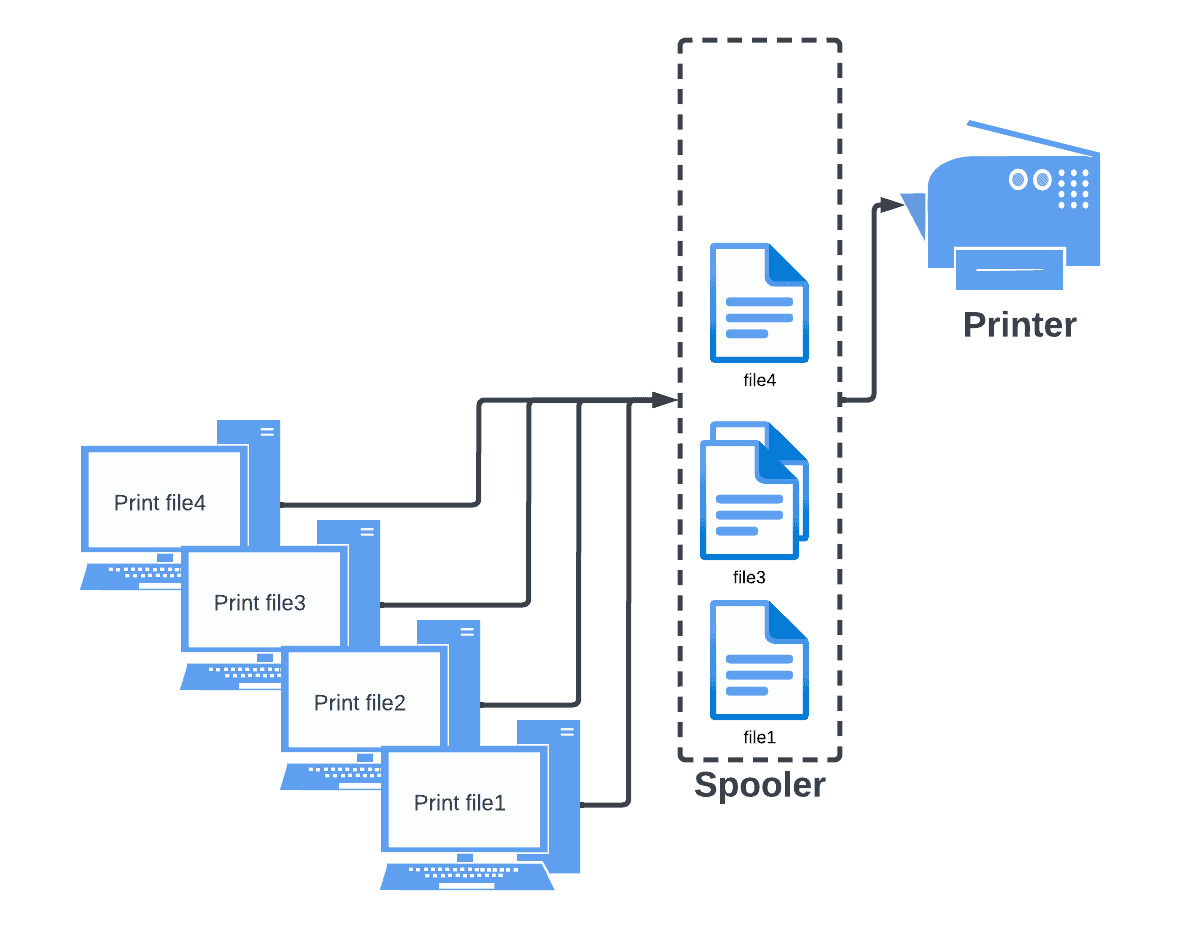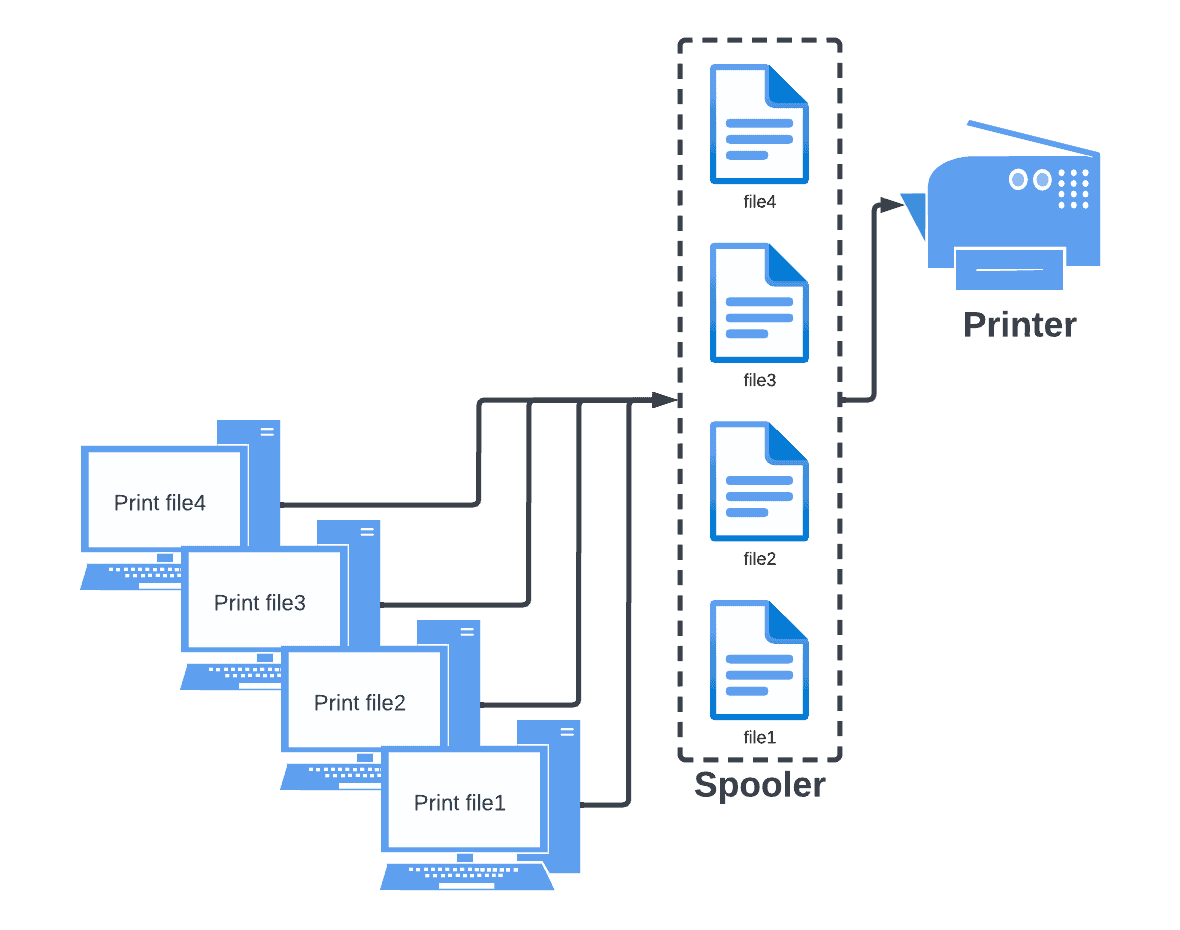1. Overview
Concurrency control is a fundamental concept in Computer Science that ensures multiple processes run in an environment where shared resources are accessed in a controlled and consistent manner. One classic synchronization problem used to demonstrate these principles is the Printer-Spooler problem.
In this tutorial, we’ll explore the Printer-Spooler problem and potential solutions using different synchronization techniques.
2. Defining the Printer-Spooler Problem
The Printer Spooler problem is a classic synchronization issue in computer science and operating systems, where multiple processes attempt to access a shared resource, in this case, a printer. It involves coordinating the spooling (temporary storing) and printing jobs to prevent race conditions from leading to data overwriting.
The problem highlights the importance of careful synchronization in multi-process systems. It’s typically addressed using semaphores and mutexes to ensure exclusive access to the shared resource. We can imagine a simple setup for this problem, which necessarily reflects it perfectly but provides a good visualization:

A spooler is a program that manages the documents for printing. We can think about this as a queue or a dedicated memory space for storing files sent to print.
3. Race Condition in Spooling Space
If two or more jobs are spooled simultaneously, they might overwrite each other due to the shared nature of the spooling space. This might cause data loss. The Printer-Spooler problem is similar to the Producer-Consumer problem, with only one consumer and multiple producers:

If the second and the third files are sent to print simultaneously, the third file may override the second one:

4. Addressing the Printer-Spooler Problem
To solve the Printer-Spooler problem, we need mechanisms that ensure only one job can spool and print simultaneously. This is achieved through synchronization techniques that control the access to shared resources.
There are a couple of approaches that help to solve this problem. In general, the solutions are similar to the approaches for the Bounded-Buffer problem.
4.1. Mutexes
Mutexes are used to create critical sections of code, ensuring only one process can execute that piece of code at a time. In our Printer-Spooler problem, the spooling job can be encapsulated within a critical section.
Mutexes can block the shared resource, in this case, the spooler, so all the computers and the printer can access it only one at a time. This way, we can ensure that all the operations are atomic and happen from start to finish without interruption from other processes.
4.2. Semaphores
A semaphore is another synchronization tool that can protect access to the shared resource. A semaphore carries a count, allowing access only if the count is positive. A process must acquire the semaphore before it accesses the shared resource and release it when done.
The approach with only a binary semaphore is similar to the mutex solution. We can block the entire spooler and allow only one actor to access it.
Counting semaphores might use a circular buffer and separate producers and consumers. This might improve the performance but would create additional complexity in the implementation.
4.3. Synchronized Spooler
After resolving the synchronization problem, we can ensure all the files will be passed to the spooler in an atomic fashion. Thus, no process would try to pass the file while another process works on it. This way, we resolve the problem of data loss:

5. Conclusion
In this article, we explored the Printer-Spooler problem, which provides valuable insight into the challenges of concurrency control and the necessity of synchronization mechanisms in computer systems. By correctly applying tools like mutexes and semaphores, we can prevent race conditions and ensure smooth and correct operation in multi-process systems.
Note that careful synchronization and process coordination are critical principles in concurrent systems, and the Printer-Spooler problem is a classic example of this.